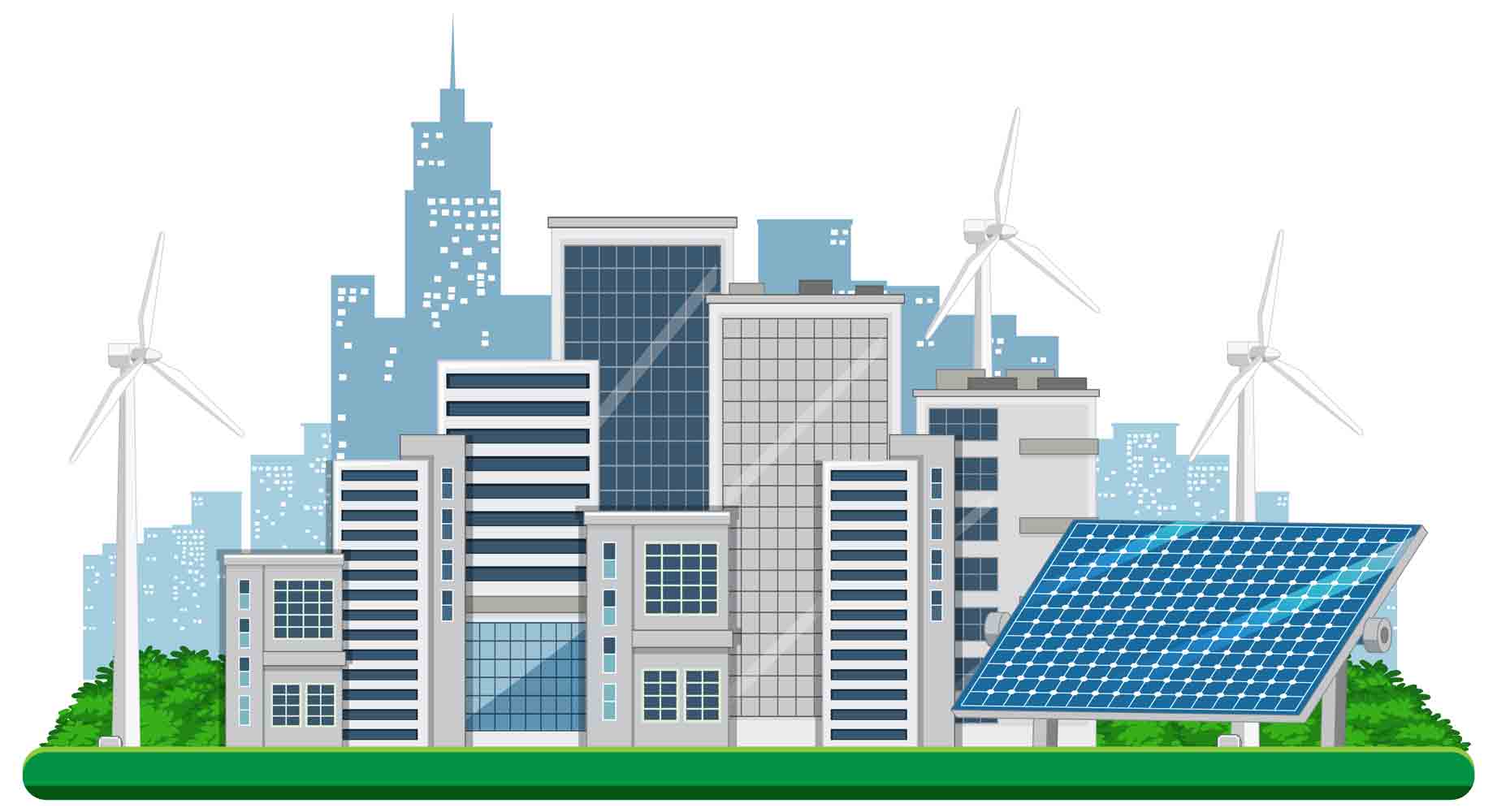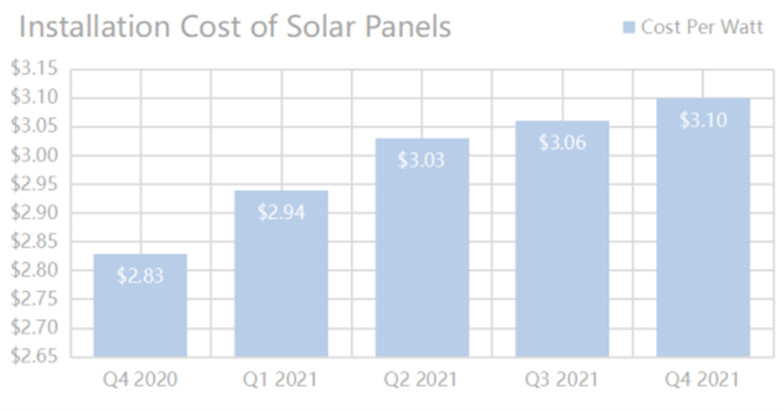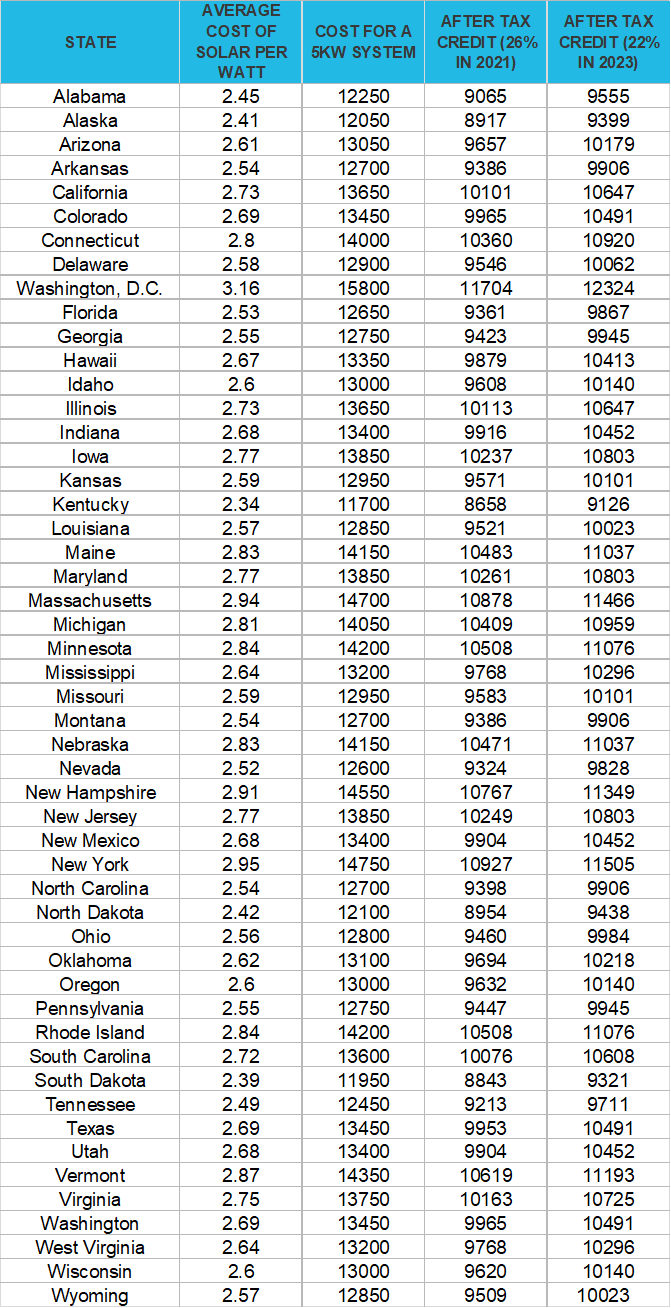Solar Panel Prices in 2022: What you need to know
Going solar has tremendous benefits for us personally and globally. Solar can dramatically reduce household energy costs, protect against rising energy costs and reduce our carbon footprint. In fact, in 2021 solar provided about 12 percent of US energy consumption and is projected to increase, an indication of its growing popularity.
Solar panel pricing

Even though solar industry analysts project that the cost of solar will continue to rise in 2022, solar remains an affordable option for homeowners. Over the last decade the cost of solar has dropped by more than 70 percent with advances in solar technologies and manufacturing.
The best way to understand the cost of a residential solar project is price per watt. Price per watt is the total cost of the project (including materials and installation with any financial incentives deducted) divided by the total wattage of your solar panels. So, if you have ten 200-watt solar panels, your system size is 2000 watts. If your total installation cost is $2000.00 then your price per watt is $1.00.
The graph below shows the average price per watt of a residential solar project in the US in 2020-2021. The rise in prices you see in the graph below is caused by increases in raw materials, freight and labor. Even with these increases the solar power system remain an affordable option for homeowners.

Solar prices by state
Just like any home improvement project, solar pricing is determined by the local cost of materials and labor, as well as any financial incentives provided by government agencies or utilities. The table below shows howprices vary across the US.

Table courtesy of energysage
Solar financial incentives
Financial incentives can provide big discounts on the cost of solar in the form of rebates or tax credits. For example, the solar tax credit is one of the available incentives. Over the period between 2020 to 2022, solar projects can apply to a 26% tax credit, and in 2023, the figure will drop to 22%. However, these incentives vary widely by state.
Types of solar panels
There are three types of residential solar panels: monocrystalline, polycrystalline and amorphous. They vary in performance, technology, materials and price.
- Polycrystalline: These panels are blue in color and use multiple silicon crystals melted together. They are a bit less efficient than monocrystalline but are a more affordable option.
- Monocrystalline: Monocrystalline are made from a single silicon crystal and typically have better efficiency and are smaller in size than polycrystalline. They also tend to be the higher cost option.
- Amorphous solar panels: They are lightweight and flexible but much lower efficiency than Polycrystalline or Monocrystalline. They are also larger and require more space for installation.

Data source: homeadvisor.com
Note: Pricing shown in this table is for the price of the panel only. Installation costs are not included.
System size and number of panels
The number of panels you'll need for a system is determined by how much energy your home uses. Typically, consumers aim to offset 100 percent of their electricity usage with solar to get their energy bills as low as possible. For example, a typical 2,000 square foot three-bedroom home will require a system with about 20 350 watt panels with a cost of between $15,000 and $40,000 with installation.
Solar Inverters
Inverters are solar components that convert the DC power your panels produce to the AC power your home uses. There are a few types of inverters and a number of manufacturers, with varying equipment and installation costs. A high-quality power inverter is sure to cost higher.
Installation
Installation represents a sizable portion of the cost of a solar project. It includes the cost of labor and additional equipment like mounting brackets and cabling. The material your roof is made of will also impact installation costs. Materials such as asphalt shingles tend to have lower installation costs, while materials like clay tile have higher installation costs.
The bottom line
While solar is a significant investment for any homeowner, the benefits are significant as well. Solar can often pay for itself in as few 5-7 years and raise the value of a home. It insulates against energy price hikes and provides clean, sustainable energy.
At Renogy we believe in a sustainable future where renewables are the core of our energy supply.Our mission is to make 50 million people energy independent by 2030 with easy-to-use, DIY renewable energy products.We offer a wide range of solar energy products. Besides solar panels, we also offer the solar battery, solar generator, power inverter, portable power station, charge controller and every accessory to power your RV, van, cabin, yacht, and more. Explore it all at Renogy.
Related articles:











